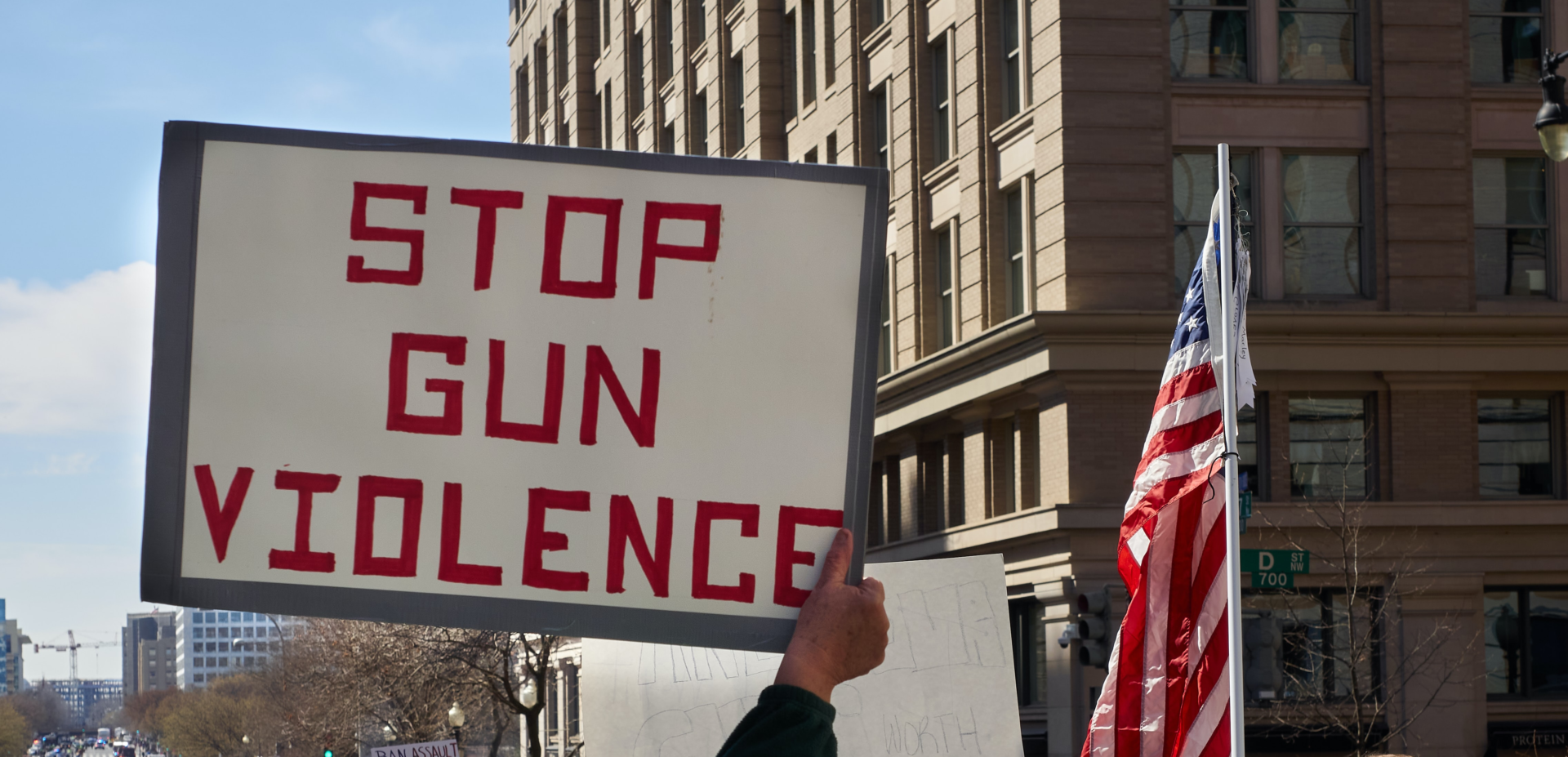Viva la Muerte! Gun Violence and America’s Culture of Death
At meaningful levels, America’s epidemic mass shootings remain difficult to explain. To be sure, the heinous killings are the work of disturbed individuals. But this fact is unhelpful beyond the most grimly obvious levels of clarification.
What shall be done?
Until now, too little analytic attention has been directed toward certain widening fissures of American culture. Because these expanding “weak-spots” could prove determinative for explaining mass casualty assaults, we should learn to look more penetratingly behind specific event details. More precisely, scholars and policy makers ought immediately to inquire: Is there something intrinsically dangerous about the core foundations of American cultural life?
History could be instructive. It could offer this beleaguered country some still-useful forms of intellectual insight. In 1936, at a speech by the nationalist general Millán Astray at the University of Salamanca in Spain, the hall thundered with the army’s favorite motto, Viva la Muerte! “Long live Death!” When the speech was over, Miguel de Unamuno, rector of the university, spoke poassionately in defense of Reason: “Just now,” intoned Unamuno, “I heard a necrophilous and senseless cry; this outlandish paradox is repellent to me.”
The cry that was repellent to Don Miguel expressed the driving passion of Spain’s Falangists. Today it also reflects the commonly-felt ethos of America’s gun-worshiping minions and sometimes aspiring mass murderers.
Macabre sentiments can animate distressed people. In these corrosive human circles, there sometimes takes hold a determined will to kill others, often en masse. In these cases, perpetrator selections of specific targets will typically reflect just an “operational” or “tactical” preference. Here, they would not likely be animated by any underlying ideology.
In essence, spurred on by dissembling visions from television, movies and social networks, would-be mass shooters generally take comfort from the idea of death as a “solution.” Such ideas may seem even more rewarding where they seemingly combine mass homicide with perpetrator suicide. Ironically, in multiple forms, “Long Live Death” remains a “living” mantra in America. With such twisted thinking, even the mass murder of young children can appear appropriate and “just.”
While each individual human being normally shrinks from personal annihilation, an implemented fusion of homicide and suicide can still augur variously reassuring celebrations of death. Sinister, but sometimes eagerly anticipated, such fusions can offer would-be mass killers a presumptively fitting path to “revenge.” For “normal people,” this rancorous sort of reasoning can make no dignified sense, but any such sensible disjunction will simply remain beside the point.
Though meaningful gun control is long overdue and indispensable, codified legal changes won’t be enough. The utterly core problem for America is not fundamentally about law, politics, or religion. It is that we inhabit a relentlessly imitative and conformist society, one deeply troubled, fervidly anti-individualist, deliriously unhappy and obscenely dysfunctional.
Ultimately, the problem of people who ecstatically murder crowds of blameless others stems from a society that loathes the individual. Driven by pressures to conform at all costs, Americans have learned not just to tolerate mass society, but to glorify it. In consequence, they remain generally more attentive to absurdist political chanting (“Guns are good”) than to the implacable pain of others.
Already, America’s most vulnerable people have become phobic toward anything that is deeply personal or can produce mordant excitement. Better to be notorious or infamous, calculates the would-be mass killer in America, than to be “weak” and invisible. For this once unimaginable figure, the worst case scenario is not to become a despised gun murderer, but rather to be taken as insignificant.
True feeling and empathy require good people to behave as thinking individuals, and not as blindly obedient members of cultural mass. Oddly, perhaps, such necessary behavior is widely viewed as mistaken, scandalous, an intrusion. Nonetheless, even in civilizations on the wane, at twilight, worn and almost defeated, an uncorrupted human life is sometimes offered a second chance.
The unheroic wail Viva la Muerte, “Long live death,” is the grotesque plea of a person who has lost his or her senses. To rescue their increasingly imperiled society from its all-too frequent confrontations with gun-based mass murder, Americans must first learn to reignite certain life-enhancing values within themselves. Once this difficult reigniting has been accomplished, a potentially navigable second chance could appear for the United States.
Together with intelligent gun control, there is simply no other viable path to America’s cultural redemption.
——————–
LOUIS RENÉ BERES was educated at Princeton (Ph.D., 1971) and is the author of many books and articles dealing with international relations, international law, art, literature, and philosophy. Emeritus Professor of International Law at Purdue, Dr. Beres has published in The New York Times; The Atlantic; Yale Global Online; World Politics (Princeton); International Security (Harvard); Harvard National Security Journal (Harvard Law School); Modern Diplomacy; International Journal of Intelligence and Counterintelligence; The Hudson Review; Horasis (Zurich); Special Warfare (DOD); Parameters, The Journal of the U.S. Army War College; Air and Space Operations Review (USAF): Israel Journal of Foreign Affairs; The Jerusalem Post; The Brown Journal of World Affairs; The Hill; Israel Defense (Tel Aviv); US News & World Report; The National Interest; Jurist; and Oxford University Press. His twelfth book, Surviving Amid Chaos: Israel’s Nuclear Strategy, was published in 2016 by Rowman & Littlefield (2nd ed., 2018). Professor Louis René Beres is a Member of the Advisory Board for Oxford University Press Annual Yearbook of International Law and Jurisprudence. He was born in Switzerland at the end of World War II.



